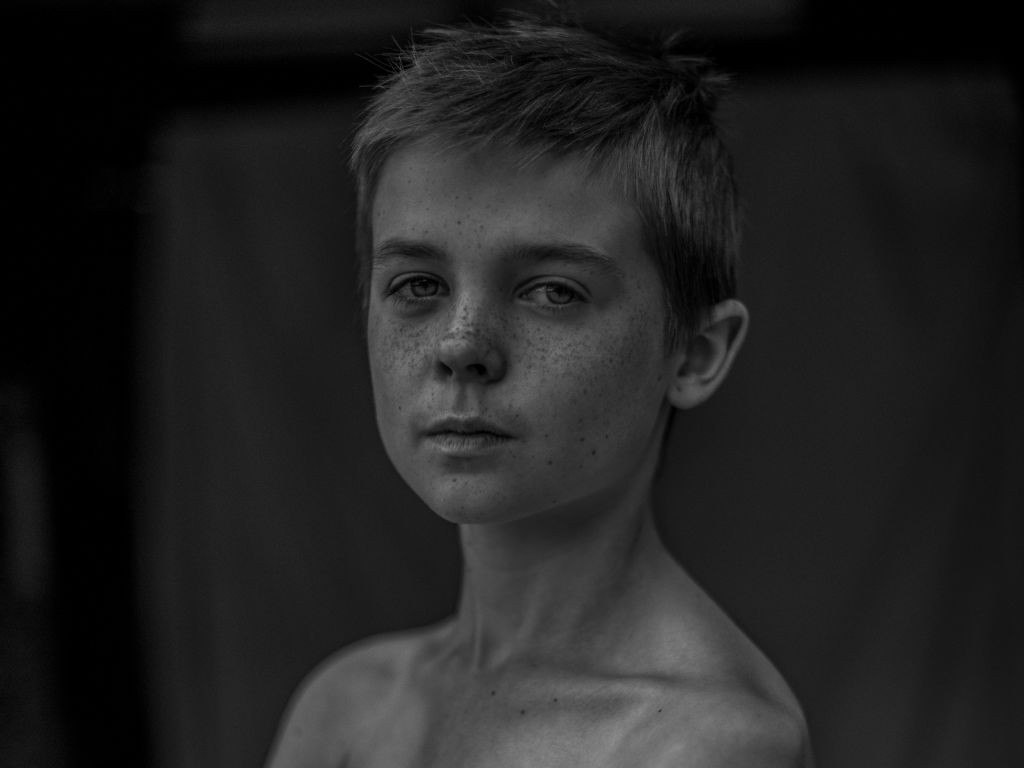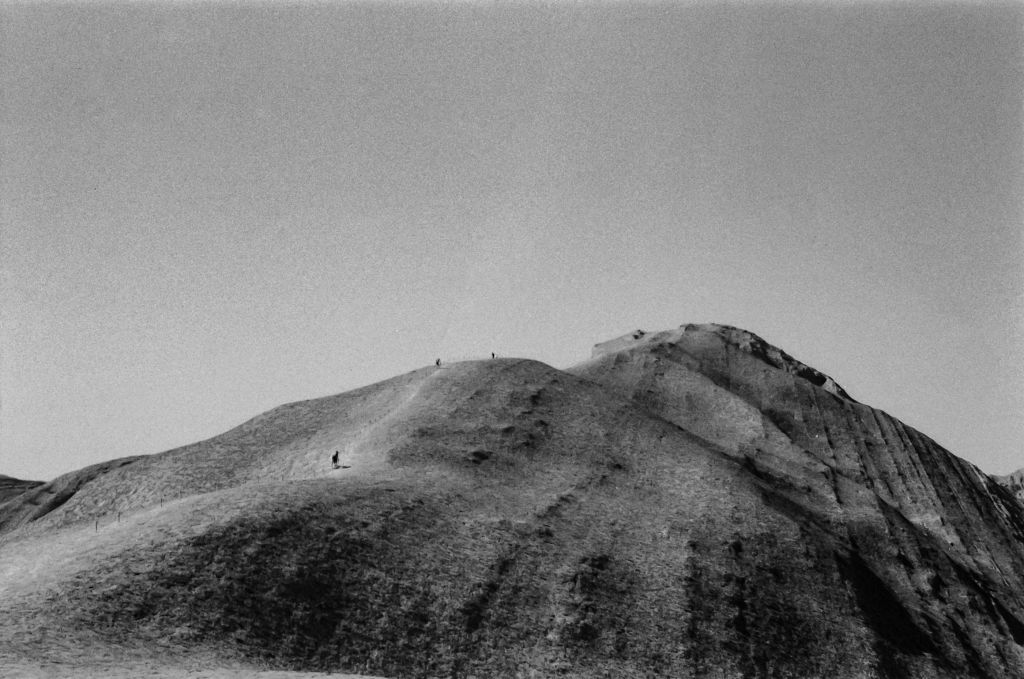See all the finalist images in a stunning outdoor gallery in Hyde Park, 19 September to 13 October

Published 3 September 2019, updated 6 November 2025
Explore some of the unique perspectives from people across the country – on show from 19 September to 13 October in Hyde Park.
Australian Life is one of Australia’s biggest – and most democratic – annual photography prizes. For more than 15 years, amateur and professional photographers from across the nation have submitted their epic and intimate images of Australia. The winners were chosen by a panel of professional photographers, artists and curators. Australian Life is part of Art & About, a year round program of temporary art projects produced by the City of Sydney.
This image was taken 1 week after the attack in Christchurch. The students from Punchbowl High School are embracing in a moment of reflection before performing the haka outside Lakemba Mosque.
Location: Sydney, NSW

“The women I look up to are Nanna Annie, my mum, Nanna Rob and Mum Skinny. They are brave and strong. I grew up in a small town, Kalgoorlie. There were no tall buildings and not that many houses. Dead grass and sand. I miss being in the desert because I could explore places there. I think the cockatoos like me because I'm brave. And because I feed them. I love it when they sit on me because I feel like a pirate.” Beniah, 13.
Location: Sydney, NSW

This image signifies a relationship between blood and material. It captures the relationship between a son and mother among sentimental belongings – objects we all grew up with. We’re given insight into a family’s history and reminded of the ties we have to our beginnings.
Location: Cundare, Victoria

These are my daughters, Indigo and Zadie. Indigo is quite strong and likes to toss her younger sister into the sea. Generally, she doesn't drop her.
Location: Avalon Beach (NSW)

The secret world of children (and a water hose) at play on a trampoline.
Location: Katoomba, NSW

Children at play, alone, without any adult supervision is simply not seen anymore. Do we live in an era where we are too afraid to leave our children to play by themselves? Set in the streets of Broken Hill, outback NSW, this scene explores the relationship between landscape past and present.
Location: Broken Hill, NSW

From shallow mass graves in Kosovo, to bloody battlefields in Helmand province, I have covered some pretty tough photographic assignments in my life. But this has been, by far, the hardest of all: documenting the day my father moved into a full-time care facility for people with stage 4 dementia.
Location: Perth, Western Australia

A fishmonger about to emerge from behind the plastic curtain of a shop in Cabramatta.
Location: Cabramatta, NSW

This is a portrait of Tommy, my nephew, age 11. It was taken in my garage in Avalon, one year after Tommy lost his father to suicide, as well as his hero, grandfather Big Tom, to cancer. Tommy is a resilient kid with freckles across his face.
Location: Avalon, NSW

I took this photo when I cycled around Uluru with my son. We visited the cultural centre and learnt a committee had been voting annually to stop people climbing the rock. Many people wanted to close the rock to climbers for safety and cultural reasons. Several tourists have died while climbing the rock. However, the tourism representative on the committee kept voting to keep it open. In November 2017, the committee decided, in conjunction with the traditional owners of the land and the Uluru-Kata Tjuta National Park board, to close the climb for good. On 26 October 2019, the 34th anniversary of the Uluru ‘handback’, the climb will be closed.
Location: Uluru (Ayers Rock), Northern Territory

Salt dries and cracks to form the shape of a half man, half bird's head on the dry salt pan of Kati Thanda (Lake Eyre).
Location: Kati Thanda (Lake Eyre), South Australia

Zufi Emerson is a 22-year-old woman from Canberra now living in Sydney. She was born in Ethiopia and adopted by an Australian couple when she was 5 months old. Zufi's adoption story is a happy one – something she is grateful for.
Location: Sydney, NSW

Spectators watch a merino sheep walking along the catwalk at Paradise Country, a theme park that introduces international tourists to Australian country culture.
Location: Gold Coast, Queensland

Todd and Alana live and work on a cattle farm in Goondiwindi, Queensland. With the drought continuing to affect Goondiwindi and the vast majority of rural Australia, this photograph symbolises the quintessential stoicism of our country’s farmers.
Location: Goondiwindi, Queensland

A firefighter walks through smoke of a controlled bush fire on Melville Island. The fire was purposely set to reduce kindling build-up and prevent large, out-of-control fires later in the dry season. For thousands of years the Tiwi people have used fire as a tool to manage their country.
Location: Tiwi Islands, Northern Territory

This portrait of mother and daughter aims to reflect diversity and multiculturalism in contemporary Australian life. The New Guinea–Pacific Islander–Filipino matriarch is an enduring force and spiritual influence in their lives. “We belong to many countries and feel stronger because of this."
Location: Brisbane, Queensland

"Oh you show-off!" Tony affectionately mocks his partner, Kevin, as he poses for the camera on a hot summer day in their home in Goulburn, NSW. "We've been together for over 40 years. And we still know how to have a good laugh!"
Location: Goulburn, NSW

This was taken during my first trip to Tasmania. After witnessing the most beautiful sunset, my family and I stumbled upon this quiet, beautiful and secluded area. Before we knew it, the moon lit up the deep, dark blue, night sky. I wanted to capture the unique beauty around me and be still in the moment. This photograph really means a lot to me because it not only captures a wonderful memory. It marks a moment in time where I was truly on my way to discovering and crafting my own photographic style.
Location: Freycinet National Park, Tasmania

“I’m a First Nations world inhabitant. Dad’s blood runs thick with quanta . Mum’s half, but her nation is stronger. The people in charge thought they were right when they smacked language out of her 6-year-old mouth. But we are learning it now – to speak and laugh and love from inside of it. Mum carries the world in this way, clutching between survival and when moments allow, curiosity. I hope to too.”
Location: Stanmore, NSW

This picture was taken at the Betoota Races which occurs once a year in a town with one pub (not open) with a population of nought in the channel country, North Queensland. Roughly 800 people attended this day. The lady here has been kissed by the Australian sun.
Location: Betoota, Queensland

In the years since Sydney's lockout laws were introduced, we've seen a steady decline in live music venues. Local bands have to be more resourceful and seek out other spaces in which to perform. In this instance, a local second-hand bookshop proved a willing host.
Location: Dee Why, NSW

Performers play up to the judges at Sissy Ball, Australia’s biggest vogue ball. Inspired by New York’s ballroom scene, vogueing was pioneered by LGBTIQ, African American and Latin communities. It is characterised by fluidity, lines, precision and dramatic poses. Curator Bhenji Ra reminds us of the scale of the Australian scene “This doesn’t just happen once a year. We’re a living, breathing community of trans women of colour and queer people of colour. Come to our balls. We’re not leaving any time soon."
Location: Carriageworks, Redfern, NSW

Here Aussies display unbridled participation at Iggy Pop’s Sydney Opera House concert in April 2019. The image represents how we welcome overseas artists who travel long distances to reach us. A woman's outstretched hand touches Iggy, who seems unaware of her as the crowd presses around him – similar to a scene depicted in Mark 5:25-34. My photo, redolent of Caravaggio’s chiaroscuro technique, went crazy on social media making 40,000 people, including Iggy, very happy.
Location: Sydney, NSW

This was taken in a small town called Brookton in Western Australia. I love the small towns dotted throughout the Australian outback. They all have their own charm and character, unique to Australia. I especially love the typography on this shop sign, and the brickwork.
Location: Brookton, Western Australia

Considered the most popular code of football in Australia, Aussie Rules football was first played in Victoria. Around 130 years later, the game still thrives in its heartland of Victoria, as shown in this photo of three workers on their lunch break having a game of ‘kick to kick’.
Location: Mitcham, Victoria

As the skies opened at a local street festival in Fitzroy, Melbourne. People ran for cover, but the music continued to play. As the smell and feel of rain drops fell, people began to head back onto the road and started to dance.
Location: Melbourne, Victoria

dhaagun ngiyanhigin.gu nganhundhi (1) is a portrait of the self. It questions the notions of western perceptions of land ownership. And how those perceptions are diametrically opposed to that of First Nations peoples, calling us to query: “Who really owns our physical bodies?”
Location: Wiradjuri country, Ilford, NSW

See all the finalist images in a stunning outdoor gallery in Hyde Park, 19 September to 13 October

Published 3 September 2019, updated 6 November 2025